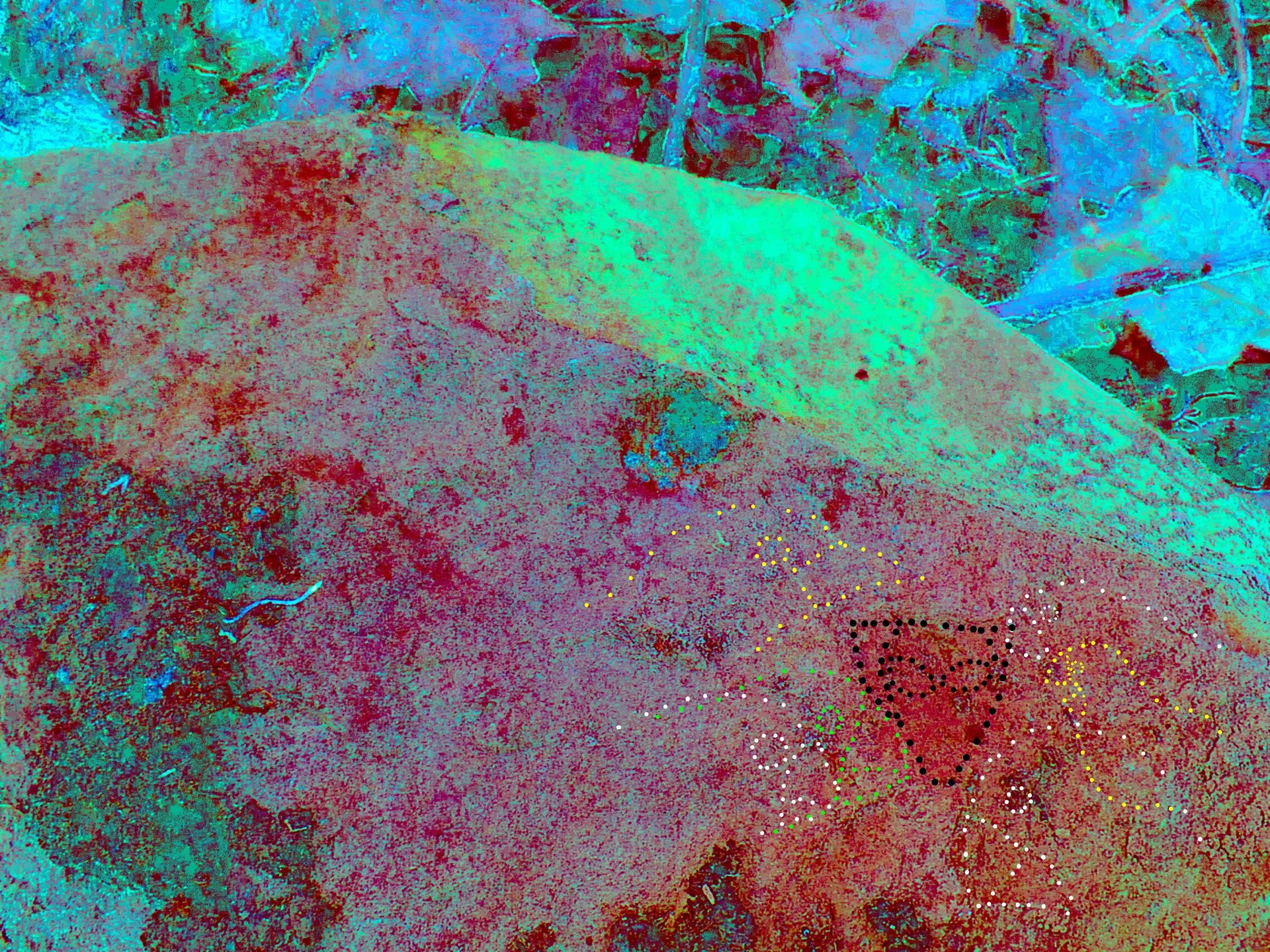
Project Updates
The Ohio Stone Tablet Site
Progress continues in the investigation of approximately fifty rectangular stone slabs and other stone stone formations at this Southwest Ohio site. In late June, Dr. Lewis Owen, a geologist from the University of Cincinnati, performed an initial review of the site and the rectangular stones.
It was his opinion that the rectangular shapes were a result of a naturally occurring process associated with the exposure of sandstone thru soil erosion on sloped surfaces, and based upon the tablets he inspected there was no indication they were shaped with tools. However, he did note evidence that their arrangement and their orientation with respect to the ground, indicated human intervention at some time in history.
Ohio Stone Tablets: A Geological Perspective of Several of 50 +/- Rectangular Stones from Jon Haskell on Vimeo.
A geologist's interpretation of a sampling of rectangular stones uniquely clustered in a small area of a remote elevated site in SW Ohio. The site is presently being researched by the Indigenous Peoples Research Foundation. For more information: www.precontact.org. Our thanks to Lewis Owen, PhD, University of Cincinnati, for his assistance.
To determine when this may have occurred, Dr. Owen identified several stones that would be candidates to have the subsurface soil exposed thru trenching to determine if radiocarbon or Optically Stimulated Luminescence dating could be performed. Arrangements are being made for this to start later this year. Additional diagnostic information may be available from discolored surface areas which indicate the possible application of pigments.
Separate from the unusual geological aspect of the stone and adding to the intrigue, is the rectangular and other irregular shaped stones scattered around the site, display two believed to be unreported motifs in North American indigenous art. One motif depicts two anatomically correct parrots facing each other. The other motif is a anthropomorphic face with slanted almond shaped eyes and a tail.
These motifs which were first recognized in northern Georgia in early 2014, were subsequently observed and traced on artifacts and natural venues from both hemispheres and chronologically extend to the Paleolithic Period. Initial findings from this research have recently been published in The Fenghuang and Dragon Motifs in North America.
Analysis of the art with microscopy photography, 3D laser scans, and other imaging techniques continue on select stones and from the nearby Great Serpent effigy mound. Additional findings will periodically be published and posted to this website.
Note the closed eyes and open mouth of the Ahau sign. The king was also called Ahau, as well as the small white flowers on the headband that only the 'Ahau ' might wear, which signified the tumpline bearing the burden of time bourne by the king. (As Ahau is the last of the Maya Day Signs, " Flower ' appears as the last sign in the Central Valley group of signs. I mention that to show the correspondence between the two groups of signs despite the fact that different languages and writing systems make the calendars of these two cultures appear different.
The Maya tell us this present Age will conclude on the day 4 Ahau, 8 Cumku, and all places in the count of days will revert to zero. This will occur when the count reaches 13 Baktun, (13 x 400 years = 5,200 years), but I explain in the book that 2012 was incorrectly calculated. Also explained is the error in logic which resulted in the currently held belief that a World Age translates into 5,125 years. I hope you will read all about it in The Sacred Count.
Mission Statement
The Foundation was established to protect and research intriguing artifacts recovered from several locations in the Southeastern region of North America, with the goals of more fully understanding the pre-Columbian history of North American indigenous cultures and finding a public venue for their permanent display.
Many of the artifacts illustrate there is still much to be learned about the pre-Columbian history of the region.
It is hoped that our efforts will incrementally be helpful in providing a clearer picture of this fascinating period.
We invite you to review these artifacts in our developing website, and contact us with comments or questions.
© 2024
All Rights Reserved | Indigenous Peoples Research Foundation
ADLC Web Design
| Gwinnett, GA

